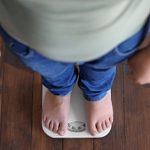
Combat veterans who suffered traumatic brain injuries due to explosive blasts may have markers in their spinal fluid similar to those of Alzheimer’s disease, new research finds. “Previous research has shown that moderate to severe traumatic brain injuries may increase a person’s risk of Alzheimer’s disease,” said senior study author Dr. Elaine Peskind, of the VA Puget Sound Health Care System and the University of Washington School of Medicine. “What is lesser known is whether mild traumatic brain injuries from military training and combat may also increase a person’s risk. Our study found that these concussions may indeed increase a person’s risk of Alzheimer’s disease.” Traumatic brain injury (TBI) is caused by a bump, blow or jolt to the head, an injury as in a motor vehicle crash, or in service personnel, blast and impact injuries. In a mild TBI, also known as a concussion, person may lose consciousness for up to 30 minutes. The new study — published online March 13 in the journal Neurology — included 51 military veterans who suffered concussions from at least one war zone blast or a combination of blast and impact injuries. They were compared to 85 vets and civilians who had not experienced a TBI. On average, those in the concussion group had experienced 20 blast concussions and two impact concussions. Participants took thinking and memory tests… read on > read on >


















